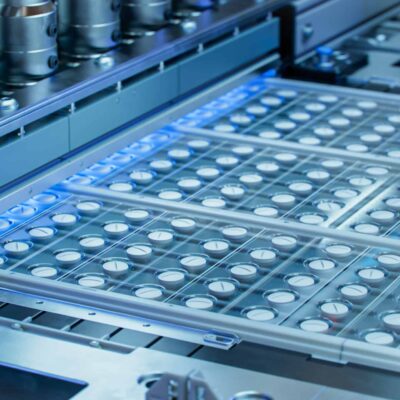The study of infection biology and genomics is critical to the development of precision medicine, including targeted drugs and vaccines to combat SARS-CoV2, the causative virus of COVID-19. At WIT, we keenly follow the latest trends and developments within life sciences and affiliate with leading experts at the top of their fields. We had an opportunity to connect with microbiology expert, Brenda Wilson, Ph.D., to discuss the importance of genomic research and how her protein engineering expertise has contributed to subunit vaccines, academic research, and commercial applications.
Dr. Wilson is a top expert in bioorganic chemistry and mechanistic enzymology, with particular expertise in protein chemistry, cell biology, and bacterial pathogenesis. Her nearly 40 years of research centers around the engineering, expression, and purification of proteins and has led to important advancements in science, including research into toxin genes relevant to cancer research, neurodegenerative diseases, and HIV.
Dr. Wilson has worked as a subject-matter expert consultant and has provided expert testimony before the International Trade Commission (ITC). She has published more than 135 scientific articles, chapters, and books, including 70 about bacterial protein toxins and over 30 about microbiome studies. She has more than 25 years of experience as an expert reviewer for numerous government and foundation grant review panels and for various scientific journals and textbook publishing companies, including serving as editor-in-chief, editor, and editorial board member for numerous scientific journals.
Dr. Wilson serves as a role model and mentor for enhancing diversity in science research and education in academic settings and promoting scientific literacy for the general public. She is the lead author of the 3rd and 4th editions of the internationally acclaimed textbook, Bacterial Pathogenesis: A Molecular Approach, from ASM Press-Wiley (2011, 2019).
1) What types of drugs, medicines, and other products are made with the proteins you study?
My early graduate studies involved studying mechanisms of antibiotic biosynthesis and the discovery of novel antibiotics. More recently, my laboratory has been exploring virulence and multidrug resistance mechanisms in E. coli and Pasteurella using comparative genomics technologies and bioinformatics.
Since my early postdoctoral training and now as faculty with my own laboratory and through collaborations with other researchers, I have provided protein engineering expertise to develop improved, recombinant proteins for subunit vaccines, academic research, and commercial applications. My laboratory has manufactured research-grade, high-quality bacterial protein toxins for commercial purchase and use by biologics supply companies, such as CalBiochem, and recombinant reporter-gene plasmids for commercial use by biotechnology companies, such as New England Biolabs.
My laboratory designs and develops recombinant protein toxin-based therapeutic cargo-delivery (BTIDD) platforms for cytosolic delivery of biologics into targeted cells. These are designer biologics that have enormous potential for many biomedical applications, particularly in the area of precision medicine with targeted cytosolic delivery of potent antitoxins and functional biologics, such as antibodies, replacement enzymes, signaling modulators, and gene-editing tools.
My laboratory’s recent comparative genomics work identifying and characterizing toxin-like modules from the ever-growing sequenced microbial genomes has broad biomedical applications in the areas of biomarker development and precision medicine. Likewise, for our microbiome studies, we have developed multi-omics approaches to discriminate healthy and diseased states.
2) What are the biggest changes you have seen in your field since you started?
The technological, biotechnological, and computational advancements that have been made over the past few decades have been phenomenal and astounding, both in terms of capability, speed, precision, and scale. Everything has exploded at a lightning pace – from Maxim-Gilbert sequencing to Sanger sequencing to Illumina metagenomic sequencing; from random chemical mutagenesis to CRISPR-Cas precision genome editing; from mouth-pipetting to automatic high-throughput robotics; from combing through reams of citation indices in the library to tapping on a handheld iPhone; and from traveling to study section carrying or shipping multiple boxes of grant proposals to clicking files on a laptop while in a Zoom conference. It is a totally different but extremely exciting world we now live in.
3) What do you think will be the next big, exciting discovery or product to come out of your field related to current trends today?
Precision medicine, personalized, predictive, and feasible through multi-omics approaches, state-of-the-art imaging microscopes, and advanced gene-editing technologies, will be the new frontier that the field forges. Advances in genomic and functional genomic technologies have now enabled more integrative and comprehensive systems biology to gain an understanding of our body, its microbial inhabitants, and their interactions with each other and us, particularly in response to changes in their environment. With the aid of high-end fluorescence microscopic imaging and a plethora of fluorescent molecular probes, we are now able to simultaneously in real-time observe the dynamic interplay of microbial cells and host cells. Add the capability of precisely editing undesirable mutations using CRISPR-Cas and other gene-editing tools, and we now can correct defects and shape outcomes. These technologies allow us to generate better predictive models of health and disease and provide more options for solutions, enabling healthcare providers to make informed decisions about interventions.
Another area that is poised for rapid advancement is the development of more efficient cytosolic cargo-delivery platforms for delivering biologics. Advances have already made it possible to very precisely target drugs and biologics to specific cells and tissues in the body. However, to date, one of the biggest challenges surrounding the delivery of novel protein-based therapeutics such as antibodies and enzymes, called biologics, is being able to deliver the cargo intact and still functionally active across the cell membrane and into the cytosol, where the cellular target of action is located. Most cargo-delivery platforms get to the correct cells and are taken up by the cells, but then they are trapped in the endosome and are often trafficked to degradation compartments before the cargo can be delivered into the cytosol where the action must take place. Our designer BTIDD platform takes advantage of the natural mode of action of a number of bacterial protein toxins, whose modular makeup allows specific binding to cells, rapid uptake, and then efficient delivery of their cargo into the cytosol. Some of the protein determinants or rules involved in this process have recently been revealed for a number of toxins, and we can now improve on the designs of these platforms for these new applications.
4) What has been or can be learned about the impact of viruses on genomes given what health officials are learning about the effects of COVID-19 on both symptomatic and asymptomatic humans?
As seen for the first SARS-CoV pandemic that occurred in 2002-2003, SARS-CoV2 (the causative virus of COVID-19) causes damage to the airways and other complications due to severe aggressive inflammatory responses, particularly in more elderly patients. Disease severity is due to not only viral infection and high viral loads, but also to the strong host response that leads to an overwhelming inflammatory response, a cytokine storm that progresses to acute respiratory distress syndrome, sepsis, multi-organ failure, and often death. Genome comparisons among the coronaviruses along with computational modeling and biochemical analyses indicate that the spike surface protein of SARS-CoV2 binds to the host cell receptor ACE2 more tightly than the earlier coronaviruses, which could contribute to its increased infectivity. Dysfunctional host immune responses, evidenced by high levels of inflammatory cytokines, appear to contribute to the more severe outcomes of inflammatory lung disease observed in some individuals, particularly the elderly or those with comorbidities such as heart disease. Young people, who tend to experience mild illness or are asymptomatic, do not generally have dysfunctional immune responses. Instead, the inflammatory response helps to clear virus-infected cells, despite reaching high viral loads. Comparative transcriptomics and proteomics approaches at the single-cell and population-level between symptomatic and asymptomatic cases will be important to elucidate key factors that mediate the balance between mild and severe disease. These factors will also be important for developing protective vaccines since appropriate T cell and B cell responses will be essential for controlling the immunopathology in favor of clearance and long-term protective responses. Understanding what drives the immune dysfunction and how to restore healthy immune function will be critical to discovering appropriate immunomodulatory interventions and successful vaccines.
For more information about working with Brenda Wilson, Ph.D., contact a client manager at WIT.
“It’s been great working with WIT. They do a terrific job identifying cases that match my expertise.”
Brenda Wilson, Ph.D.
Check out our Drug and Vaccine Development initiative and learn more about our Life Sciences practice. Follow us on LinkedIn and Twitter to stay up-to-date on our latest Q&As with WIT Affiliate Experts.








